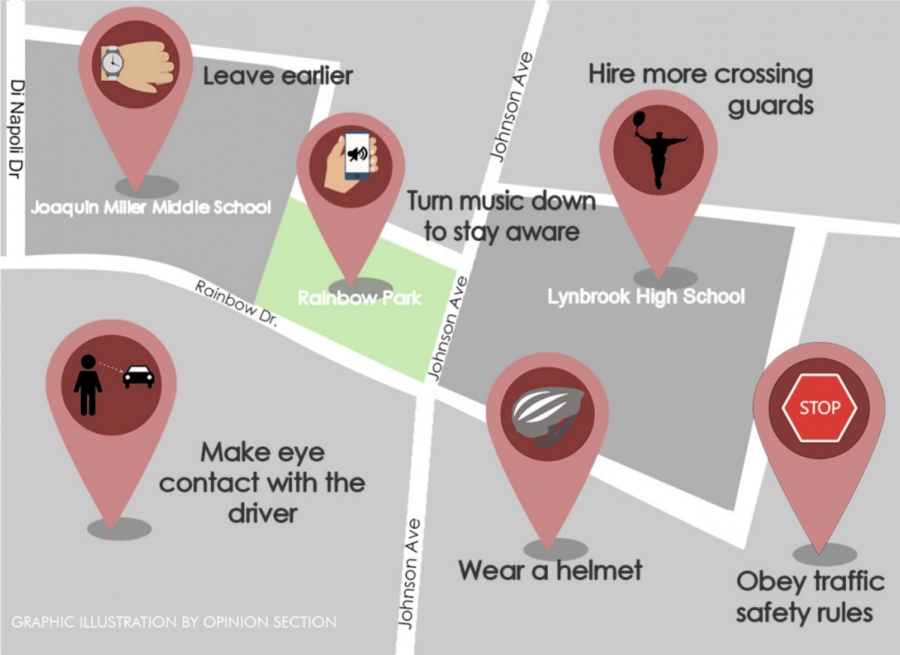Editorial: Preventative measures to eliminate hazards
November 9, 2018
Every morning, parents and students rush in cars, on bikes or on foot to get to class on time. Amid the rush, the chance of an accident or collision is increasingly likely, putting pedestrians and bikers in dangerous situations. In hopes of mitigating this issue, staff, students and parents can all take extra cautionary measures to make the Lynbrook campus a safer environment.
In response to recent traffic incidents, Lynbrook administration has stationed pedestrian crossing guards at the school’s entrance and near the swimming pool gates where most students enter the campus. Parents and students alike have suggested the addition of more pedestrian traffic guards to help ease traffic. However, the administration has pointed out the difficulty and complexity of this solution.
“Right now, we feel that we have enough people out there. Because of the construction, we added one more administrator and two more staff members in the drop-off area,” said Assistant Principal Eric Wong. “In the past, we’ve brought out civil engineers who have looked at the stop signs and curbs. The [San Jose city government crossing guards] that you see at other street corners, those are [for] schools in the Cupertino Union School District. They’ve somehow set aside funds for that. We [as the FUHSD] do not.”
The responsibility also falls on students to maintain safety regarding traffic on and around campus. Regardless of mode of transportation, students should leave home earlier in an attempt to avoid traffic and any possible accidents caused by haste. Additionally, students should be more aware of their surroundings, abiding by common safety norms such as staying off of phones when crossing streets and making eye contact with drivers at intersections. To avoid collisions with cars, they should walk only on the sidewalks and cross using designated crosswalks with pedestrian crossing guards. On campus, they should walk inside the fences in the parking lot in order to avoid collisions with cars.
Bicyclists should make sure to wear their helmets rather than hanging them on their handlebars or not having them at all. Once on campus, bicyclists should walk their bikes and stay within the boundaries that set walkers and bikers apart from the heavy influx of cars.
“On days when I run late, it’s a hot mess,” said senior Michelle Zhou, who drives to school. “Parents are bending the rules left and right — at the intersection in front of the entrance, people cut corners and go two to four [cars] at a time instead of waiting for one car from each direction.”
Student and parent drivers should pay attention to bicyclists and pedestrians crossing the road, keeping their eyes off of their phone to prioritize safety over trying to prevent a possible tardy. Parents driving their children to school should drive cautiously and refrain from making illegal U-turns to beat the traffic, since these U-turns only worsen traffic by causing further congestion down the line. They also should not drive on bike lanes to cut through traffic or open their doors on the side facing the road to step out of the car because students biking to school are blocked.
“I see parents taking wrong U-turns, going fast, parking in wrong places,” said Lynbrook parent Madhan Rangaswamy. “These kids have their own cars and I see high school students doing the same. Parents need to be a role model for their children who are driving.”
By students, parents and staff coming together as a community with each individual doing their part to alleviate the daily traffic, hopefully, the preventative measures the Lynbrook administration have taken will prove effective.
the Epic staff voted 38-0 in favor of this stance.



























































